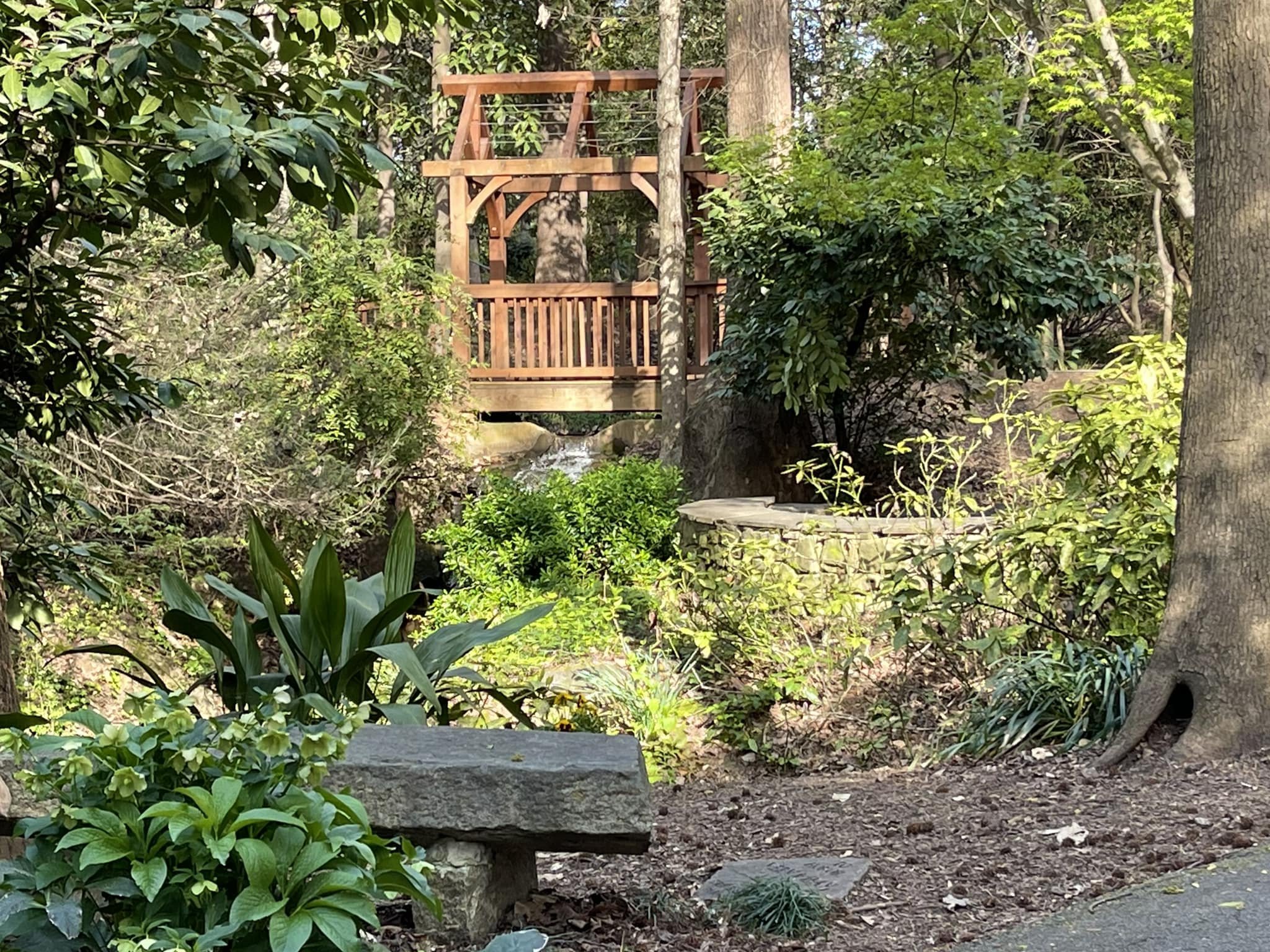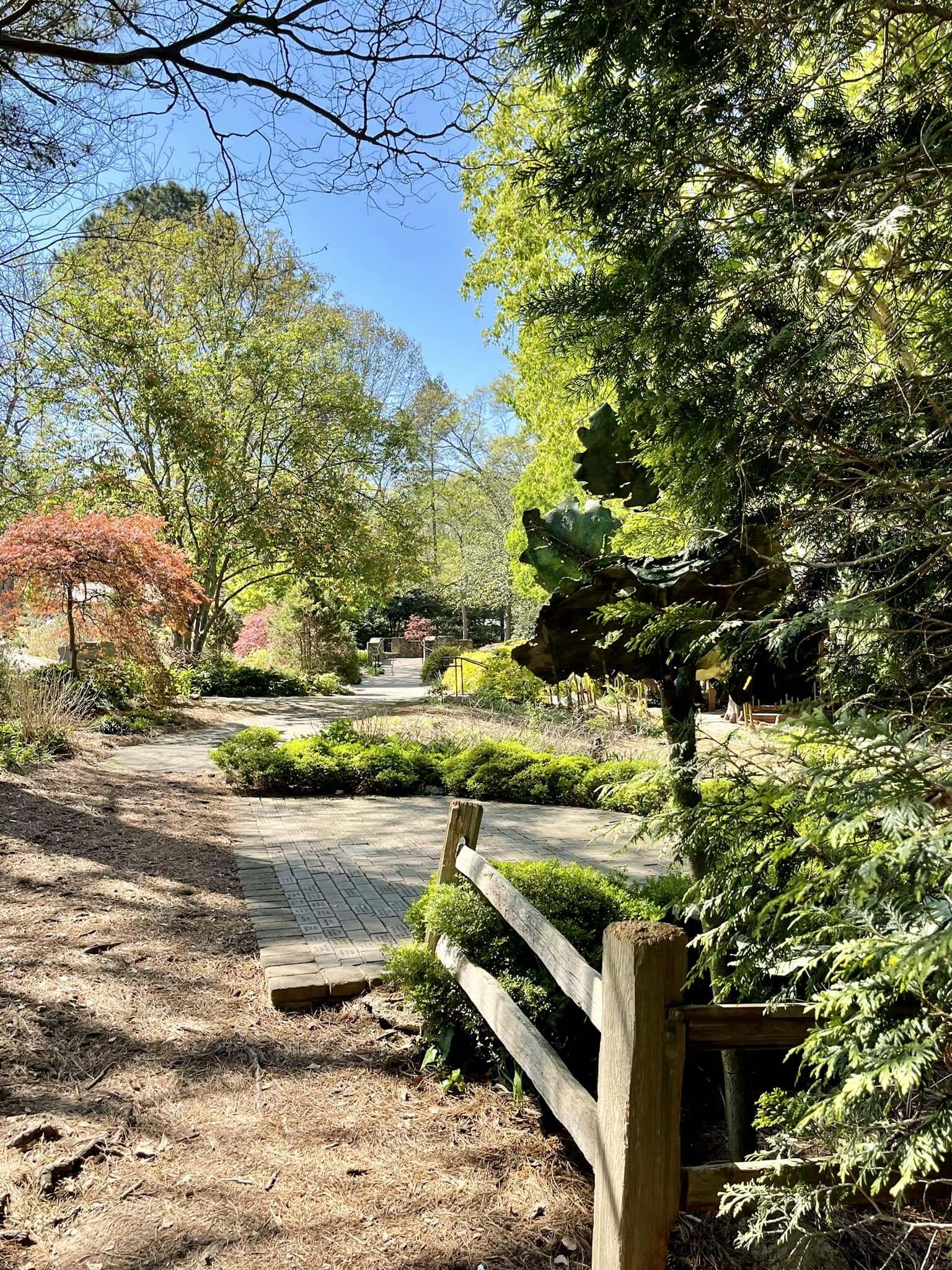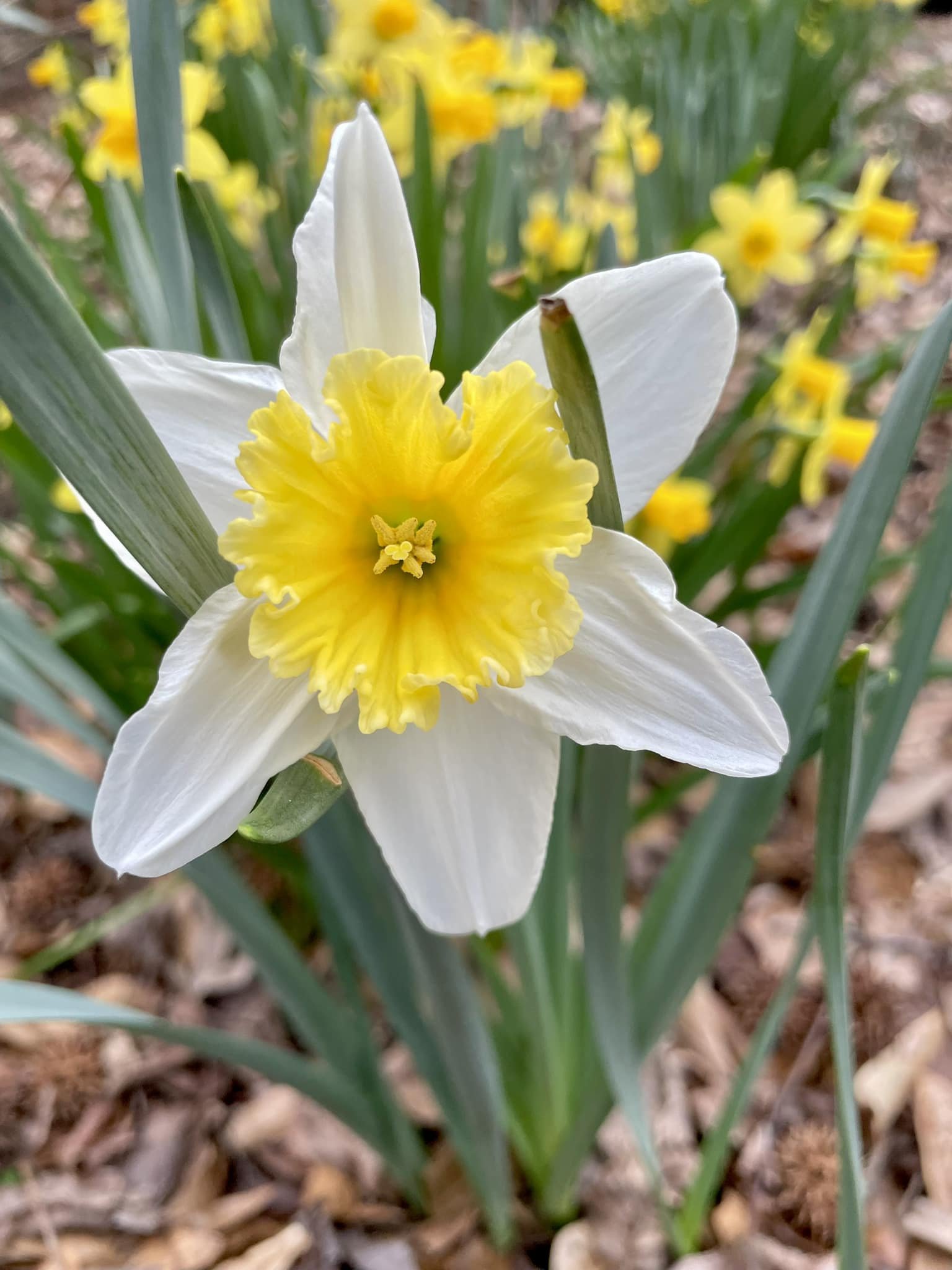Supporting Healthy Habitats
by Dan Shook, Garden Manager
Hatcher Garden has allowed me to be courageous in the gardening world and has taught me more about biodiversity than any other experience in my life. On a daily basis, I have to figure out what to plant and why in order to manage such a wonderful place. Global warming, biodiversity, garden visitors, education, safety, and sensory are just a few of the influences that affect planting decisions.
When I first arrived at Hatcher Garden, I planted to extend the beauty of the seasons. The Garden was primarily a spring garden. The addition of daffodils, black gum, and pollinators made Hatcher Garden a spring, summer, and a beautiful fall garden. Conifers add to the winter textures to make Hatcher a year-round destination.
But now, after several years, plant decisions are made for diversity and habitat protection. Plantings are added only if they benefit another inhabitant of the Garden. Oaks (the number one caterpillar and food tree) are planted for the next generation of visitors, but also because they add the greatest input into habitat support for insects, shelter for birds, food for squirrels, and cleaner air for everyone. We plant viburnum for the same reasons. Solidago, beebalm, and less turf add to the diversity of habitats.
I am designing several prairie gardens here and around Spartanburg to introduce diversity and habitat protection this year. One will show up in a development on the west side of Spartanburg this month with the goal to educate Homeowner Associations on how to handle difficult slopes and waste areas that become unsightly.
What can you do? Plant pollinator-friendly plants, an oak tree, or support those projects that do the above. The insects, birds, and future generations will thank you.




